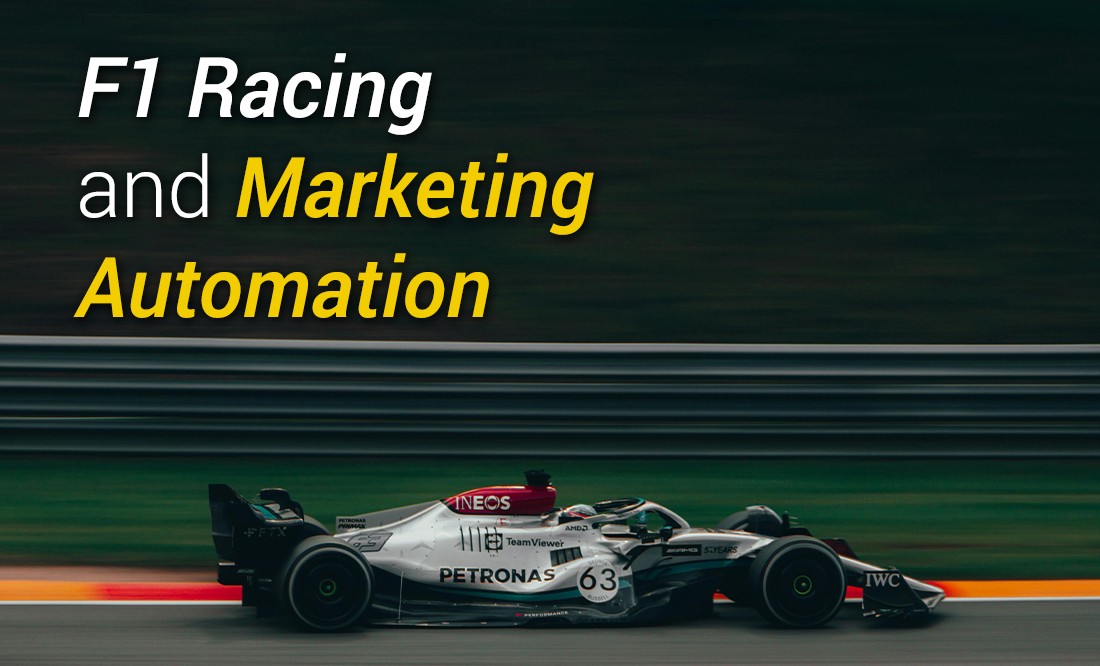This thought leadership article is authored by Digital Alchemy’s CEO, Regan Yan
For those who know me, it’s no secret that I like to build stories around things that I’m interested in. At the moment I’m obsessed with F1, and like many others, I’ve hopped on the bandwagon of Netflix’s “Drive to Survive”. While many see F1 as a bunch of petrolheads driving in circles for insane amounts of money, the inside stories behind the competition between teams are far more interesting. There are many similarities between F1 racing and marketing automation. Let me start by sketching out the framework for this analogy:
- Engines are your automation platform (SAS, Salesforce, Braze, or Adobe)
- Your broader team of marketing and IT are the F1 team
- The car is your infrastructure, your data infrastructure, your technical support
- The fuel is the data
- The CRM or marketing team is the driver (Alex Albon, Carlos Saines, Lewis Hamilton, Max
Engines (Martech Platform)
Make no mistake, engines are important, but not as important as you think. Ferrari and Haas have the same engine, as do Mercedes and Williams. Yet, Ferrari and Mercedes are at the front of the grid, while Haas and Williams are at the back.
Some people love Salesforce and achieve great success with it, while others have the opposite experience. The harsh reality is that it’s unlikely to be the platform itself. The four major platforms — SAS, Salesforce, Braze, and Adobe — all work and do their job. Much like engines, what really matters is what you build around them and how you drive them.
The Car (Infrastructure)
If you put a good engine in a crappy car, you get a Williams or a Haas. If you look into it further, you realise that Williams just doesn’t have the systems and infrastructure to build a car that maximises the engine’s potential. Many of their processes are automated, relying heavily on workarounds, hot fixes and compromises. If you look at a Williams and a Mercedes car from the outside, they look similar. It’s impossible to visibly see a difference that justifies one car consistently being at the front and one consistently at the back. Williams has consistently under invested in infrastructure over the past decade, trying to compete with outdated systems and processes.
Without investment in the data infrastructure, then you will have a martech platform that looks the same as your competitors but underperforms. While they are easily able to produce hyper personalised communication in real time, you might struggle to get weekly batch campaigns out based on limited segmentation.
Team (IT and Marketing)
When you look into an F1 team, the designers, engineers and mechanics are specialists — they only build F1 cars and have spent their careers perfecting their skills in this pursuit. The mechanic who works on an F1 car is not the same guy down at your local Toyota dealership. Similarly, the guy who designed your Camry is not the same guy who designed the Redbull RB20. If you want to win, you need the expertise of specialists.
Designing martech platforms is a specialisation. It’s not the same as designing an ERP system or any other system for that matter., Specialist expertise and the ability to design for automation are key factors in differentiating winners from losers.
The Fuel (Your Data)
All F1 cars run the same fuel. While this is not a direct comparison to marketing —since each enterprise has different data—because of course all enterprises have different data, my point here is that within an industry, the data that most marketers have available is roughly the same.
What differs is the delivery of that data to the marketing process. I hear many marketers complain that they can’t do their job because of poor data. However, imperfect data is a fact of life, and focusing on the gaps in data is a distraction. We should focus on the data we have, and how to get the most out of what we do have. I see far too many marketers complain about data quality and data availability when they haven’t exhausted the opportunity in what they have available.
The Driver (CRM Team)
Alex Abon is a good driver in a bad car (Williams), consistently at the back of the grid. Sergio Peres is an ordinary driver in a good car (Redbull), often in the middle or back of the grid.
There are two key points that I would like to make when it comes to drivers and CRM teams. A driver’s performance is limited by the car they are driving and the team they are working with. Good drivers are adaptable and consistent. Peres can be an amazing driver but he is not adaptable or consistent.
You can recruit the best CRM team but without the right infrastructure and support team, they will not succeed. They will certainly perform better than a poor team, but they won’t put you at the front of the grid.
Conclusion
To win, you need to get everything right. Recognise that specialist skills in design and operations will make the difference between success and failure. It’s easy to create something that looks like your competitors, but the ingredients to success lie beneath the surface. All F1 cars look roughly the same, but the race results differ vastly. The components are similar and the fuel is identical, but the design and integration of these components make the difference. Drivers are important, but they must work with the team, and brilliant drivers in terrible cars don’t win races.

by Regan Yan, the CEO of Digital Alchemy.
Regan is a subject-matter expert in analytical database marketing and customer relationship marketing, as well as an in-demand presenter and keynote speaker at national and international events. He also authors thought leadership pieces on data-driven marketing that can be found on the DA Blog.



